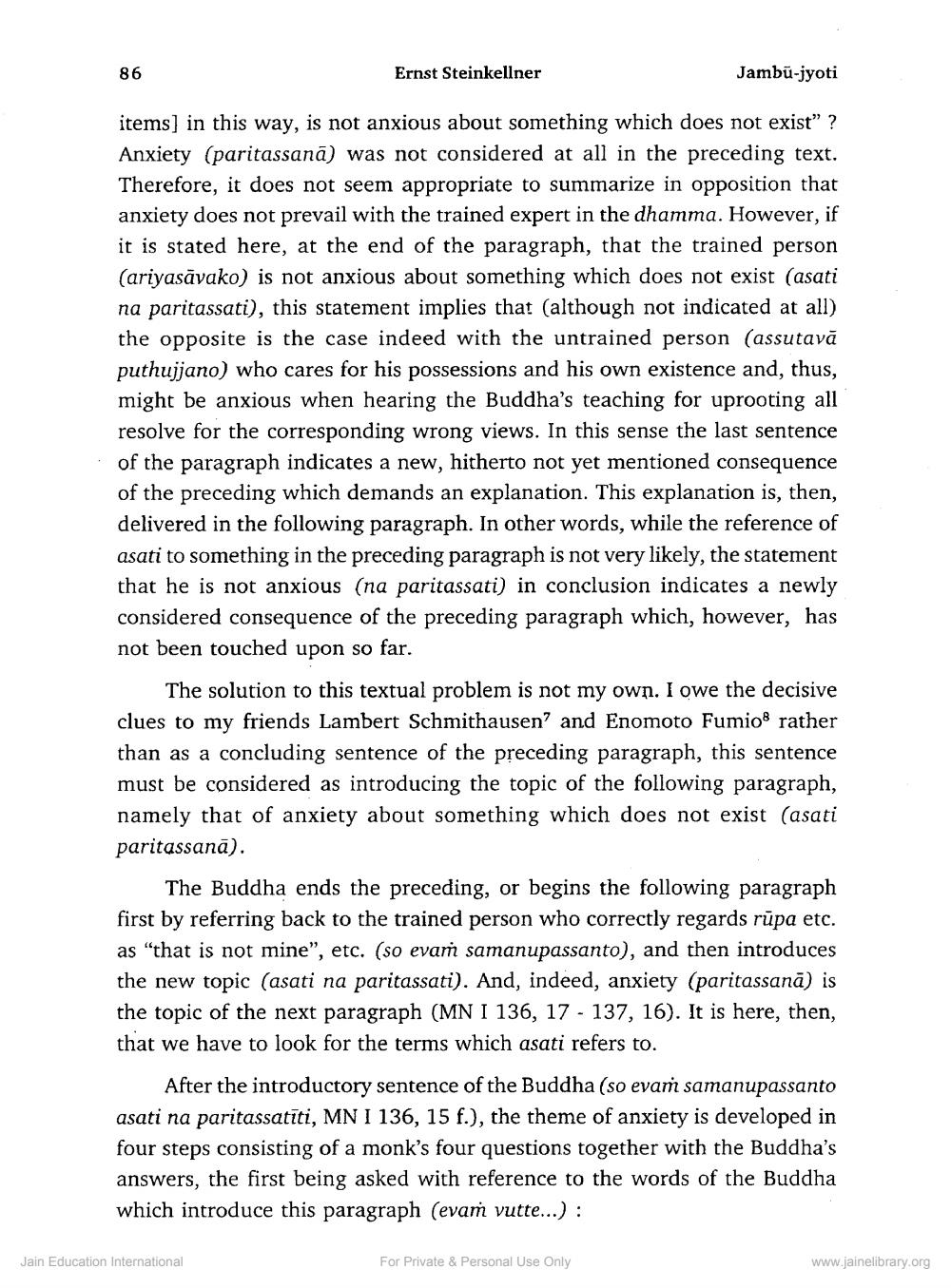________________
86
Ernst Steinkellner
Jambū-jyoti
items) in this way, is not anxious about something which does not exist” ? Anxiety (paritassana) was not considered at all in the preceding text. Therefore, it does not seem appropriate to summarize in opposition that anxiety does not prevail with the trained expert in the dhamma. However, if it is stated here, at the end of the paragraph, that the trained person (ariyasāvako) is not anxious about something which does not exist (asati na paritassati), this statement implies that (although not indicated at all) the opposite is the case indeed with the untrained person (assutavā puthujjano) who cares for his possessions and his own existence and, thus, might be anxious when hearing the Buddha's teaching for uprooting all resolve for the corresponding wrong views. In this sense the last sentence of the paragraph indicates a new, hitherto not yet mentioned consequence of the preceding which demands an explanation. This explanation is, then, delivered in the following paragraph. In other words, while the reference of asati to something in the preceding paragraph is not very likely, the statement that he is not anxious (na paritassati) in conclusion indicates a newly considered consequence of the preceding paragraph which, however, has not been touched upon so far.
The solution to this textual problem is not my own. I owe the decisive clues to my friends Lambert Schmithausen? and Enomoto Fumio rather than as a concluding sentence of the preceding paragraph, this sentence must be considered as introducing the topic of the following paragraph, namely that of anxiety about something which does not exist (asati paritassana).
The Buddha ends the preceding, or begins the following paragraph first by referring back to the trained person who correctly regards rūpa etc. as "that is not mine", etc. (so evaṁ samanupassanto), and then introduces
1). And, indeed, anxiety (paritassanā) is the topic of the next paragraph (MN I 136, 17 - 137, 16). It is here, then, that we have to look for the terms which asati refers to.
After the introductory sentence of the Buddha (so evam samanupassanto asati na paritassatiti, MN I 136, 15 f.), the theme of anxiety is developed in four steps consisting of a monk's four questions together with the Buddha's answers, the first being asked with reference to the words of the Buddha which introduce this paragraph (evam vutte...):
Jain Education International
For Private & Personal Use Only
www.jainelibrary.org




